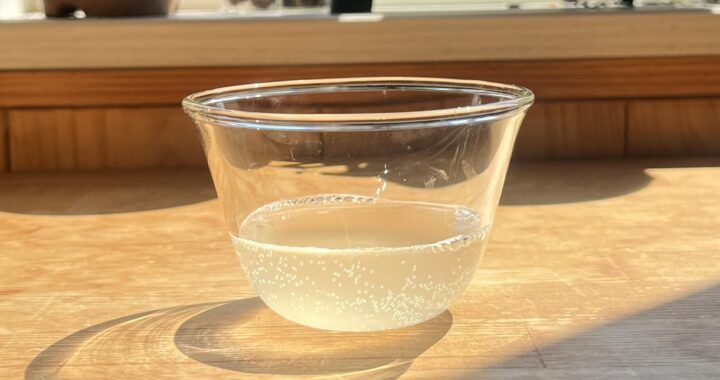The following blog is about some specialty teas I decided to use, one of which Obubu has and another I was able to enjoy and learn about while in Japan. These two teas are Sakura tea and Awabancha.
For the first specialty tea that I decided to use was sakura sencha which is a blended tea with sakura blossoms and sweet sakura tea. You can learn more about how we harvest and create our sakura teas here in Sakura Picking 2021 and Sweet Sakura Tea.
Sakura tea soda recipe:
Ingredients:
- Sakura tea
- Sakura Sencha
- Sakura Honey
- Ginger bug
Items:
- Flip top bottle
- Measuring Cups
- Scale
- Tea pot
- Bowls
Recipe:
- Measure 12 grams of sakura sencha and put it into a teapot. Add 280-300 ml of water at 70 de C and brew for 20 seconds put aside. Step 2nd Brew at 90 de C for 20 seconds and add to 1st Brew. Set aside to cool,
- Add 4 , 5 gram packs of sweet sakura and add about 200 ml of water to brew for 30 seconds. Do this twice and set aside to cool
- Meassure 25 grams of sakura honey and set aside 60 grams
- Add honey to bottle and add half sakura sencha and half sweet sakura to bottle
- Add the blossoms from the sweet sakura into the bottle
- Pour 2 tablespoons of ginger bug into the bottle leaving about 1 inch of headspace at the top
- Close the bottle and mix gently and let sit at room temperature for 24 hrs.
- Put into the fridge after 24 hrs until cold.
- Note: putting it in the fridge will calm the fizzyness a bit so that when you open it it will not rush out.
- Open over sink and Enjoy 🌸🌿🍵😋
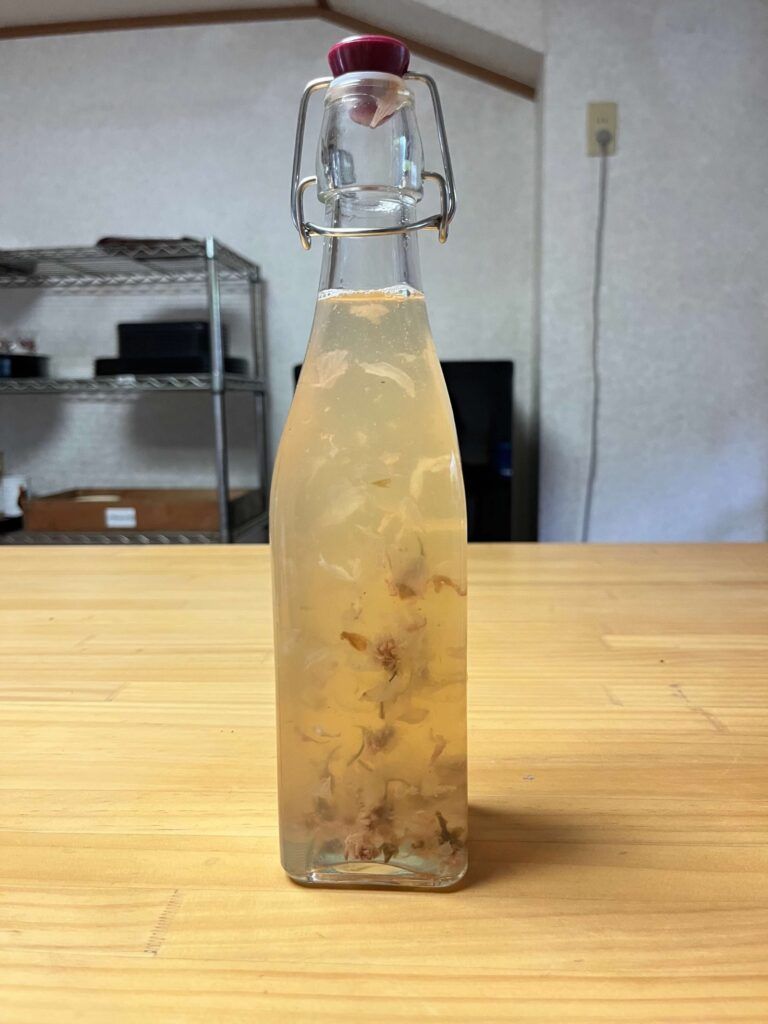
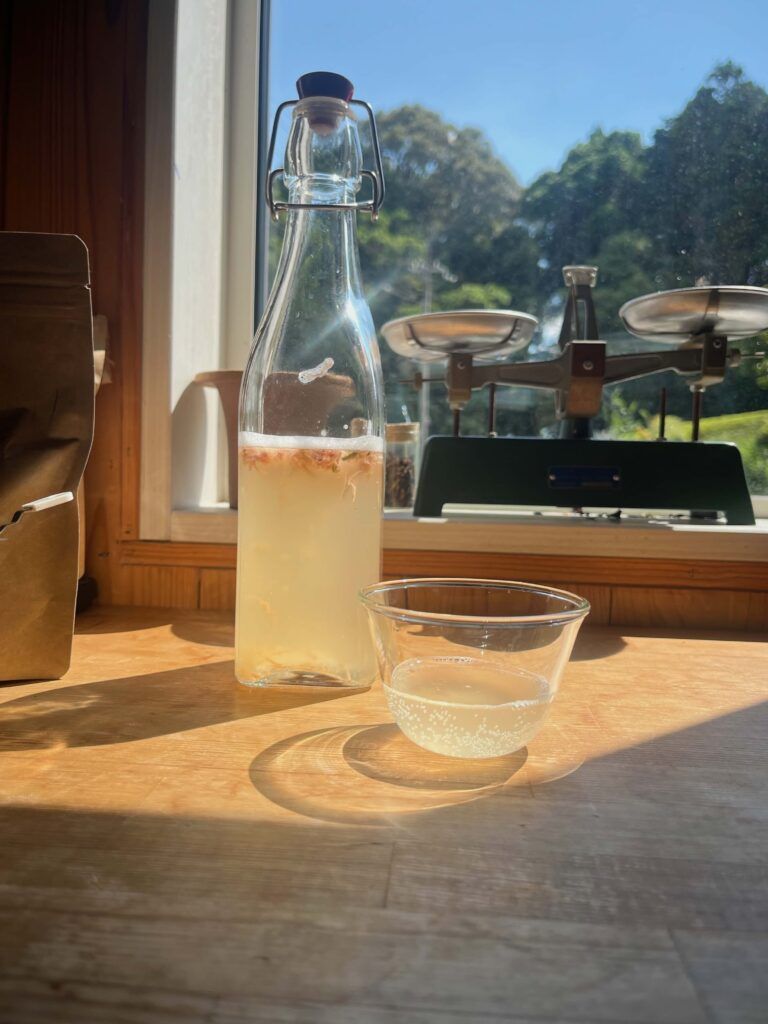
Thoughts:
This tea turned out differently than what I was expecting from when I had initially made and tried it. It was nice and floral with a subtle sweetness and great balance of fizziness. I think that the way I brewed both teas really helped bring out a nice flavor. I think I would continue to add the flower to the tea as I think staying with the tea helps the floral note come out stronger but also well balanced. I think it would be great just to drink while out in the summer.
Awabancha tea soda:
This tea is a bit different because Awabancha is a naturally fermented tea. It is typically harvested in late June or early July and it typically uses Bancha which are the darker rougher leaves on the tea bush. It is processed by boiling the leaves as it is typically faster than steaming and then usually rough rolled a little bit and then put into a barrel; The barrel is then filled with the tea juices from the boiling process until all the leaves are submerged as this creates an anaerobic environment which will promote the leaves to ferment and helps with lactic acid production. The barrels can typically hold about 300 kg of tea and will ferment for about a month before being dried and then ready for consumption. I found the taste of Awabancha to be interesting and have found it hard to describe its flavor. While being in Wazuka I got the opportunity to help make Awabancha and had lots of fun in the making process. I thought it would be interesting to see how it would be in a tea soda.
Awabancha soda recipe:
Ingredients:
- Awabancha
- Honey plain
- Ginger bug
Items:
- Flip top bottle
- Tea pot
- Bowls
Instructions:
- Measure 10 grams of Awabancha and put it into a teapot. Add 280-300 ml of water at 90 de C and brew for 60 sec. Do this twice and set aside to cool.
- Measure 50 grams of honey and set aside
- Pour 2 tablespoons of ginger bug into bottle then add tea to bottle leaving about 1 ½ inch of headspace at the top as pictured below:
- Close the bottle and mix gently and let sit at room temperature for 24 hrs.
- Put it into the fridge after 24 hrs until it is cold.
- Note: putting it in the fridge will calm the fizzyness a bit so that when you open it it will not rush out.
- Open over sink and Enjoy🍵🌿
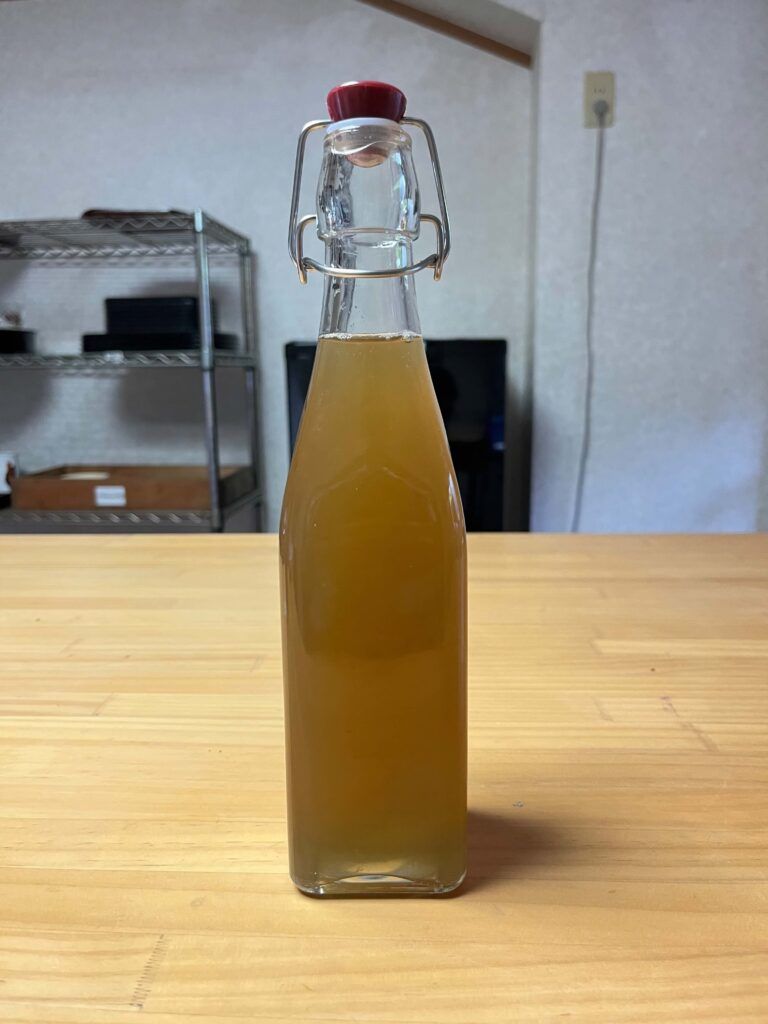
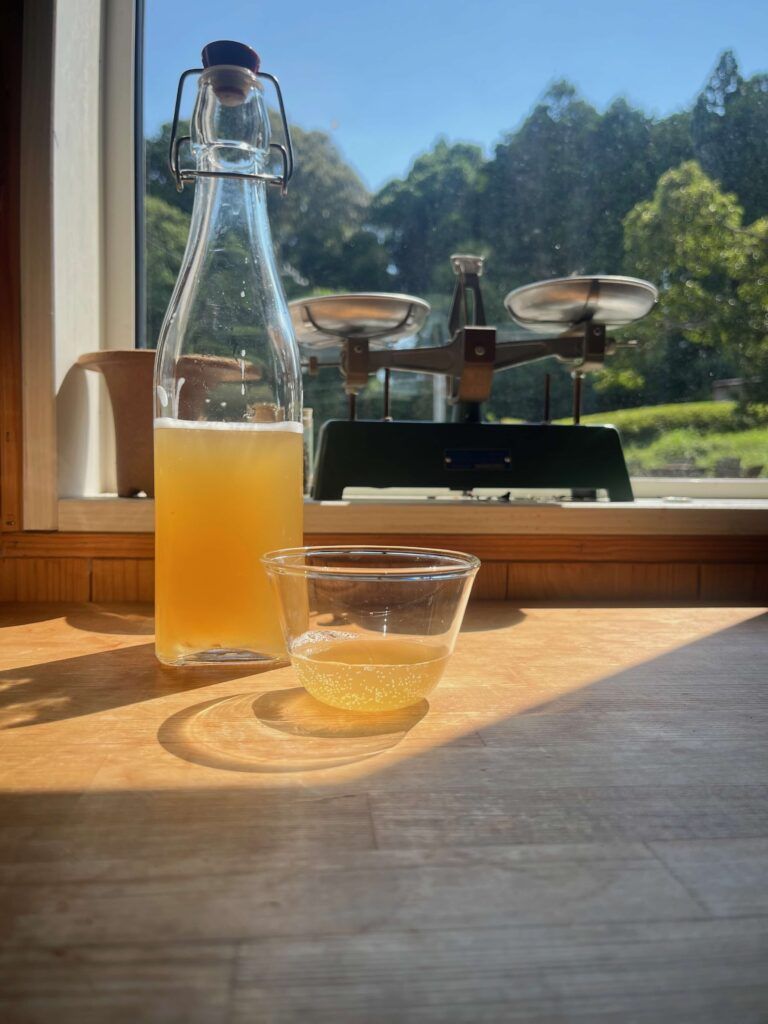
Thoughts:
The awabancha was the most surprising because it really wasn’t sweet but had a great taste. It is a little hard to describe how Awabancha tastes but that overall taste of it was very well balanced. The fizzyness in this soda was also great and I think it would pair well with anything savory or sweet as the flavor could go with either profile.
Final note:
I found all of these combinations to be delicious and have been making even more combinations since writing these blogs. I think my favorite of them all was the Sakura sencha because of its light floral taste and overall refreshing feel. I hope you all enjoy these teas and enjoyed the journey of the different tea sodas I was able to make.
More on Awabancha:
https://www.myjapanesegreentea.com/awa-bancha
Thank You for reading. 😊 🍵


